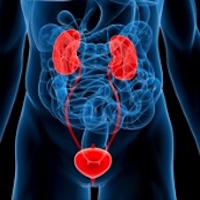Short term effects of home-based bladder training and pelvic floor muscle training in symptoms of urinary incontinence

Accepted: December 12, 2019
All claims expressed in this article are solely those of the authors and do not necessarily represent those of their affiliated organizations, or those of the publisher, the editors and the reviewers. Any product that may be evaluated in this article or claim that may be made by its manufacturer is not guaranteed or endorsed by the publisher.
Aim: The aim of this non-controlled trial was to investigate the effects of a homebased pelvic floor muscle training (PFMT) and bladder training (BT) in urinary incontinence (UI) among women.
Patients and methods: The study included 25 individuals who were diagnosed with UI. PFMT which strengthens pelvic floor muscles was described to patients in litotomy position with using digital palpation method. PFMT was given as homebased exercise program for six weeks, 7 days a week and ten times a day. BT was planned according to the symptoms of the patients. Assessments were done at the beginning and at the end of the six weeks exercise program. The outcome measures were UI severity measured by pad test and QoL measured by King’s Health Questionnaire. The secondary outcome measure was lower urinary tract symptoms and sexual health measured by Bristol Female Lower Urinary Tract Symptoms Index.
Results: Pre- and post-treatment assessments done with pad test showed that there was a statistically significant decrease in the severity of UI (p = 0.002). The difference between preand post-treatment QoL scores (p = 0.001) and lower tract symptom scores were also statistically significant (p = 0.000). Conclusions: When PFMT and BT were given together there was a decrease in the symptoms and increases the QoL.
PAGEPress has chosen to apply the Creative Commons Attribution NonCommercial 4.0 International License (CC BY-NC 4.0) to all manuscripts to be published.


 https://doi.org/10.4081/aiua.2020.2.142
https://doi.org/10.4081/aiua.2020.2.142



